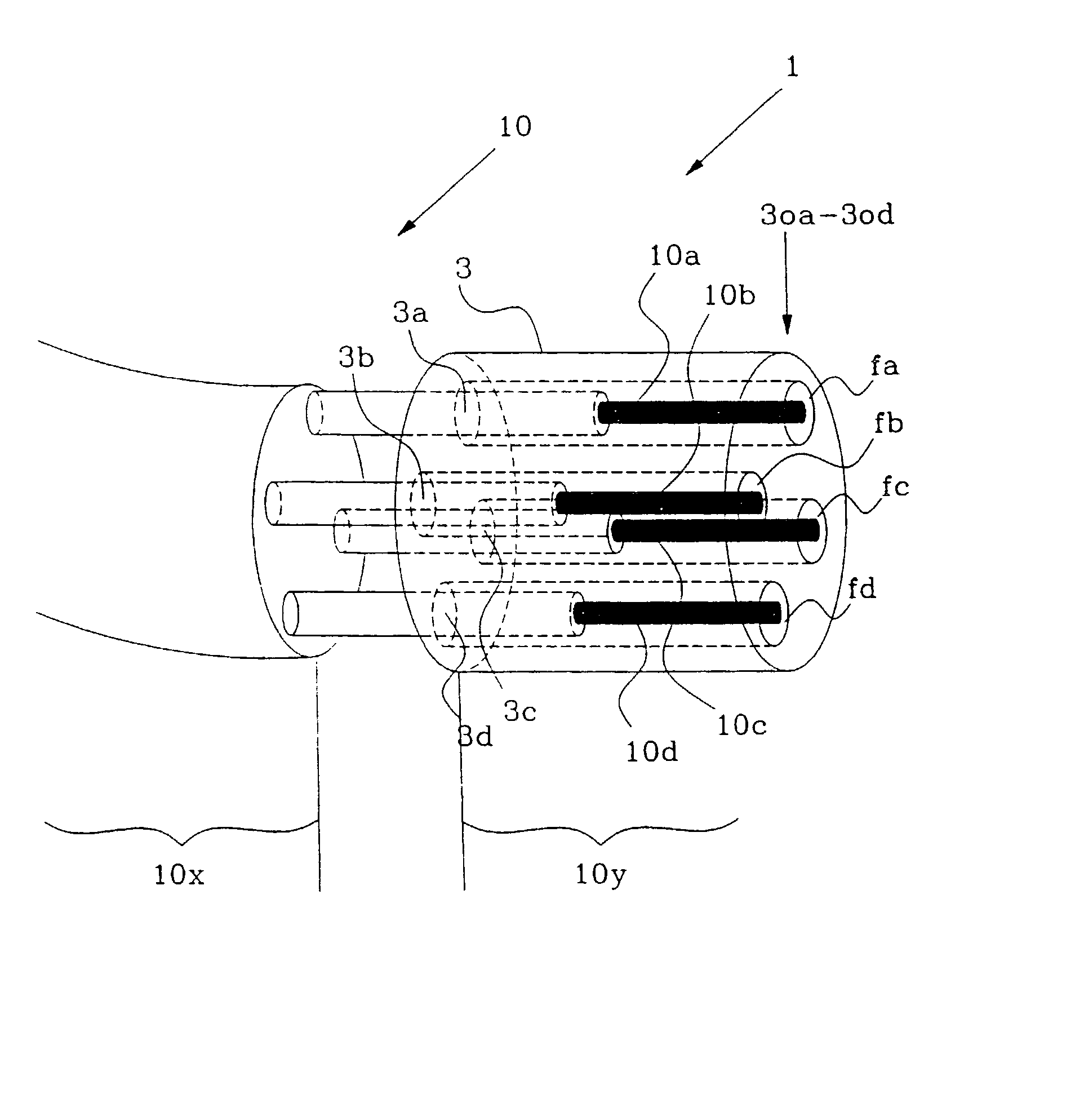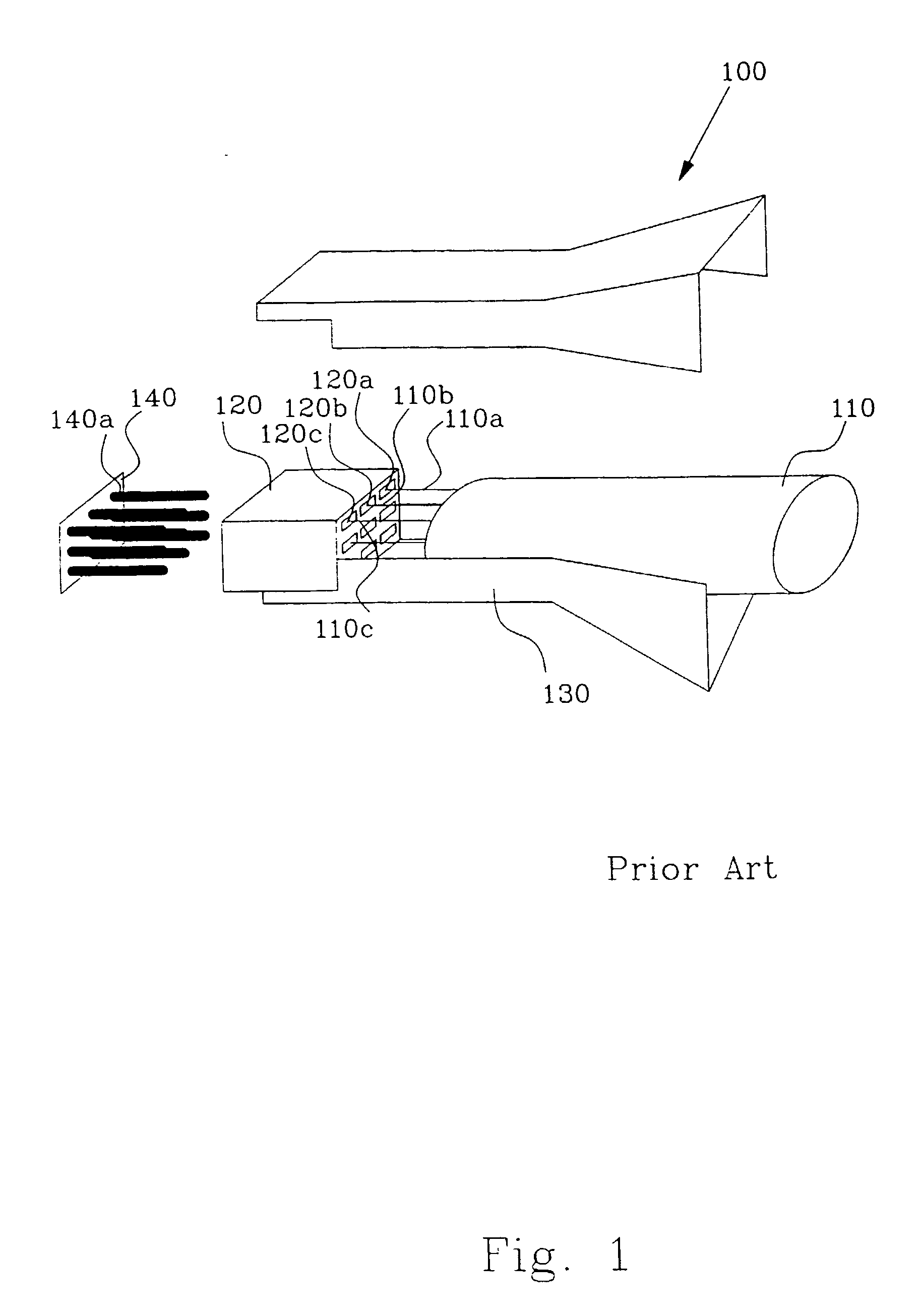Cable connecting device
a technology of connecting device and cable, which is applied in the direction of connection contact material, connection device connection, electric discharge lamp, etc., can solve the problems of low efficiency, laser incurring high cost, and requiring laser to be used as signal generator
- Summary
- Abstract
- Description
- Claims
- Application Information
AI Technical Summary
Benefits of technology
Problems solved by technology
Method used
Image
Examples
Embodiment Construction
[0019] FIG. 1 illustrates an example of an earlier known cable connecting device 100. The prior art device includes a protective casing 120 and a conductor joining device 120 connected between a cable 110 and a unit 140 that receives said cable connecting device. The cable 110 includes electrical conductors 110a, 10b and 110c. The conductor joining device 120 includes electrically conductive connection forks or sleeves 120a, 120b and 120c which extend from an input side to an output side opposite to the input side of said device 120. The electric conductors 110a, 110b, 110c are connected to the connecting forks 120a, 120b, 120c of the device 120 on its input side. In order to be able to fit the cable conductors 110a, 110b, 110c to the connecting forks 120a, 120b, 120c, it is necessary for the cable 110 to be spaced from the conductor connecting device 120. In this respect, the separated or free-laid conductors are located in the air gap between cable and device. The distance require...
PUM
 Login to View More
Login to View More Abstract
Description
Claims
Application Information
 Login to View More
Login to View More - R&D
- Intellectual Property
- Life Sciences
- Materials
- Tech Scout
- Unparalleled Data Quality
- Higher Quality Content
- 60% Fewer Hallucinations
Browse by: Latest US Patents, China's latest patents, Technical Efficacy Thesaurus, Application Domain, Technology Topic, Popular Technical Reports.
© 2025 PatSnap. All rights reserved.Legal|Privacy policy|Modern Slavery Act Transparency Statement|Sitemap|About US| Contact US: help@patsnap.com



